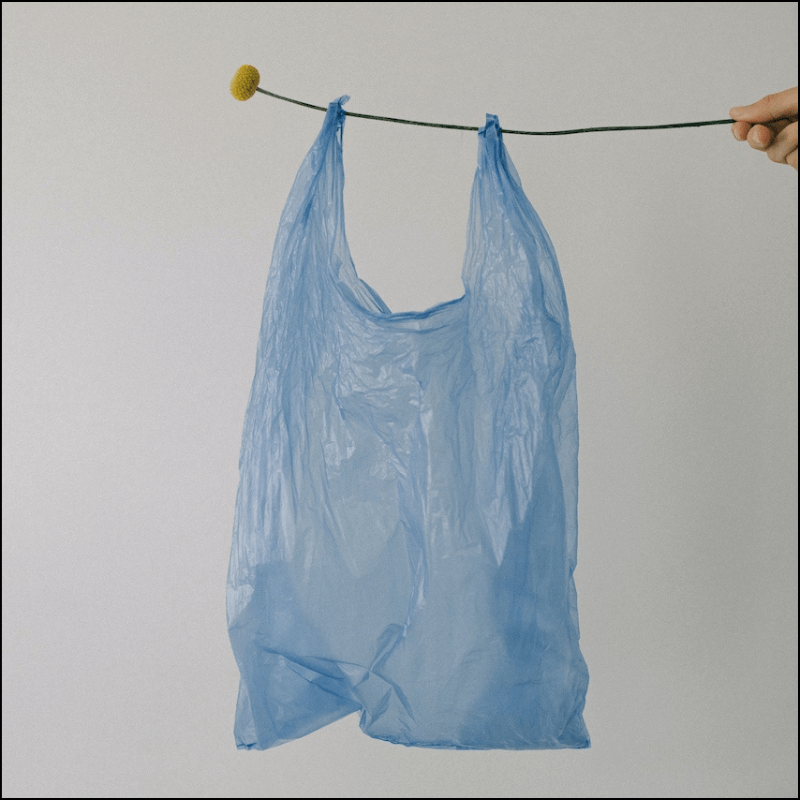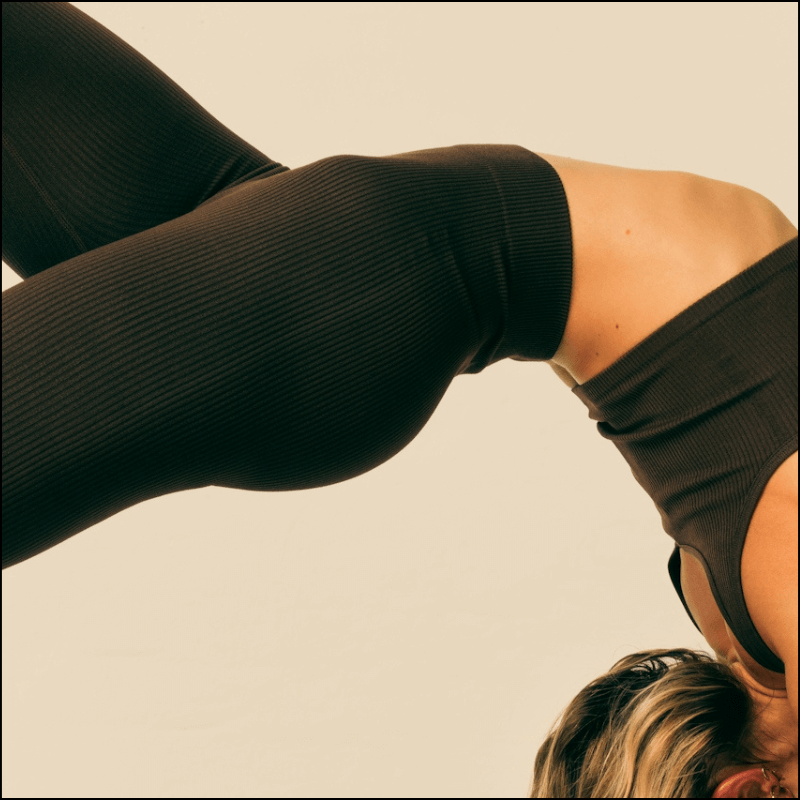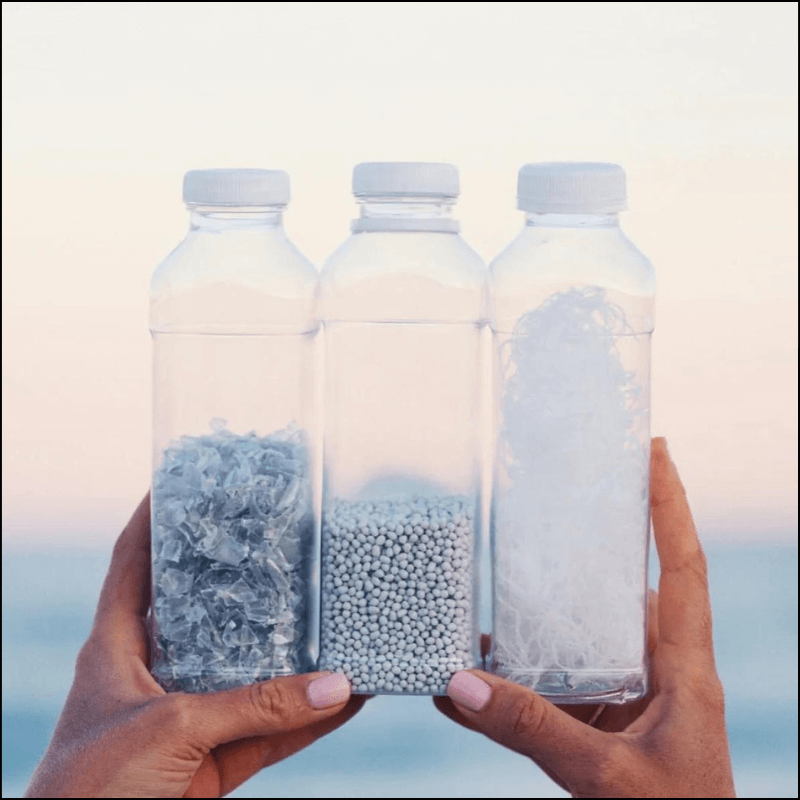innovative textiles… that aren’t polyester made from recycled plastic bottles
At this point who isn’t using Repreve (my personal favourite) or another brand of polyester or nylon made from PET recycled plastic bottles for the athleisure or swim line? Five or six years ago the technology was novel and exciting, now it’s basically a commodity.
what is polyester?
If you ask a scientist, what is polyester? They will tell you something like this "polyester is a synthetic resin in which the polymer units are linked by ester groups, used chiefly to make synthetic textile fibers.
What?
Basically, polyester is a synthetic fiber that is made from petrolium.
is polyester plastic?
Plastics are made out of petroleum. So, is polyester a plastic then? Yes! Because it is a type of plastic it is very hard to break down. That is why there has been so much technology dedicated to finding cleaner more earth-friendly ways of producing it.
other technologies
Thanks to amazing marketing and education from the Story of Stuff, there is a lot of info available to the public about the chaos polyester is creating on our planet.
This week I am exploring and celebrating three new fiber technologies that deserve the spotlight and are still relatively new to the market. One of them is even an alternative to plastic! Welcome to the future...
electricity harnessing fibers
Twistron fibers, created by the University of Dallas and Hanyang University in South Korea, were officially introduced to the public last month. These tiny nanofibers have the capability of taking wasted kinetic energy and converting it into useable energy. Maybe you have already seen a similar technology at your local gym. I first saw these machines at the Shangri-La in Manila a few years back. They take the energy you create while exercising and convert it into useable energy. The energy created is a relatively small amount, but it’s a step in the right direction. Twistron’s are kind of the same thing.
They work by over twisting a nanofiber and then stretching the twisted fiber in a solution (no crazy chemicals here, just table salt and water). When the fiber is stretched in the solution it creates energy.
How can this be used? So far they have tried a couple of practical applications. The team made a shirt out of the fibers, and the small movements generated by a person breathing were enough to stretch the nanofibers and create energy. They also anchored the fibers between a float and sinker in the ocean. When the waves came the float would rise, stretching the fiber and thus, creating energy. What does that mean? We could potentially have another source of natural energy powered by ocean waves, and created by fiber technology!
non-plastic foam
“BLOOM is the world’s first plant-based performance-driven foam formulated with algae biomass. Our algae is a renewable feedstock, sourced from lakes and ponds at high risk of algal bloom, and reduces our dependence on petroleum, a non-renewable resource.”
I like bloom because they doing double eco-goodness. They are taking a problematic substance, too much algae, which in excess can throw entire ecosystems off balance, and creating a product that can replace foam, a historically environmentally horrible material; it’s basically whipped plastic.
Why else do I like Bloom so much? They aren’t perfect and they know it. I am tired of hearing about how everyone has the newest solution to “save the world”. Bloom has a great product. But, they also want to be better. They proudly state they are not biodegradable YET, but are working on creating a 100% biodegradable consumer product for the future. Props to them for being upfront and honest and not just “conveniently forgetting to mention” their works in progress.
How is it being used?
Right now it's being used in vivo barefoot shoes and Surftech SUP (stand up paddle) boards! Check them out!
waterless dying
I’m pretty sure every eco- blogger has done a piece about how terrible the dying process is for the environment. A few days ago I came across this article about dogs in Mumbai that were dyed blue from contamination in a local water source! It's horrible, but I’ll admit it, as horrible as that is, they do look kind of cute, like tiny little Hindu God dogs 😝. DyecCoo has created a water free and chemical free dye process that uses CO2 instead of H2O as a dye solvent.
Here is how they explain the process
"DyeCoo uses patented and industrial proven technology based on CO₂, instead of water. So how does it work? The technology uses reclaimed CO₂ as the dyeing medium in a closed loop process. When pressurized, CO₂ becomes supercritical (SC-CO₂), a phase between a liquid and a gas. In this state CO₂ has a very high solvent power, allowing the dye to dissolve easily. Thanks to the high permeability, the dyes are transported easily and deeply into fibres, creating vibrant colours."
There are two amazing things about this process. The first is that it uses zero water, this means that local water supplies will not be exploited for the sake of fashion. The second is that this technology can scale. There are so many new technologies out there, but unfortunately, a lot of these cool new fabrics of the future are too costly to use in everyday clothing or to mass produce. This is not the case with DyeCoo.
Where is this technology being used? Nike was one of the first to promote DyeCoo processes in their Super Bowl 50 collection.
“new” technologies honorary mention
Nanosilver and silver threads for antimicrobial properties have received a lot of press especially, in the startup community. But, this technology is nothing new, and has actually been around for years in camping and medical equipment.
Leave a comment about what new fiber and textile technologies you are excited to try!
*This weeks blog post photo of the Mary River Turtle was taken by Chris Van Wyk. That green mohawk on his head is made of algea... see, it all makes sence now



Comments
Melanie —
Yes, Jonathan! is there something particular that you want to chat about? And, thank you Elle :)
Johnathan —
Have you looked into the potential harmful effects of nanoparticles?
Elle D —
Thanks for sharing these amazing innovative textiles.